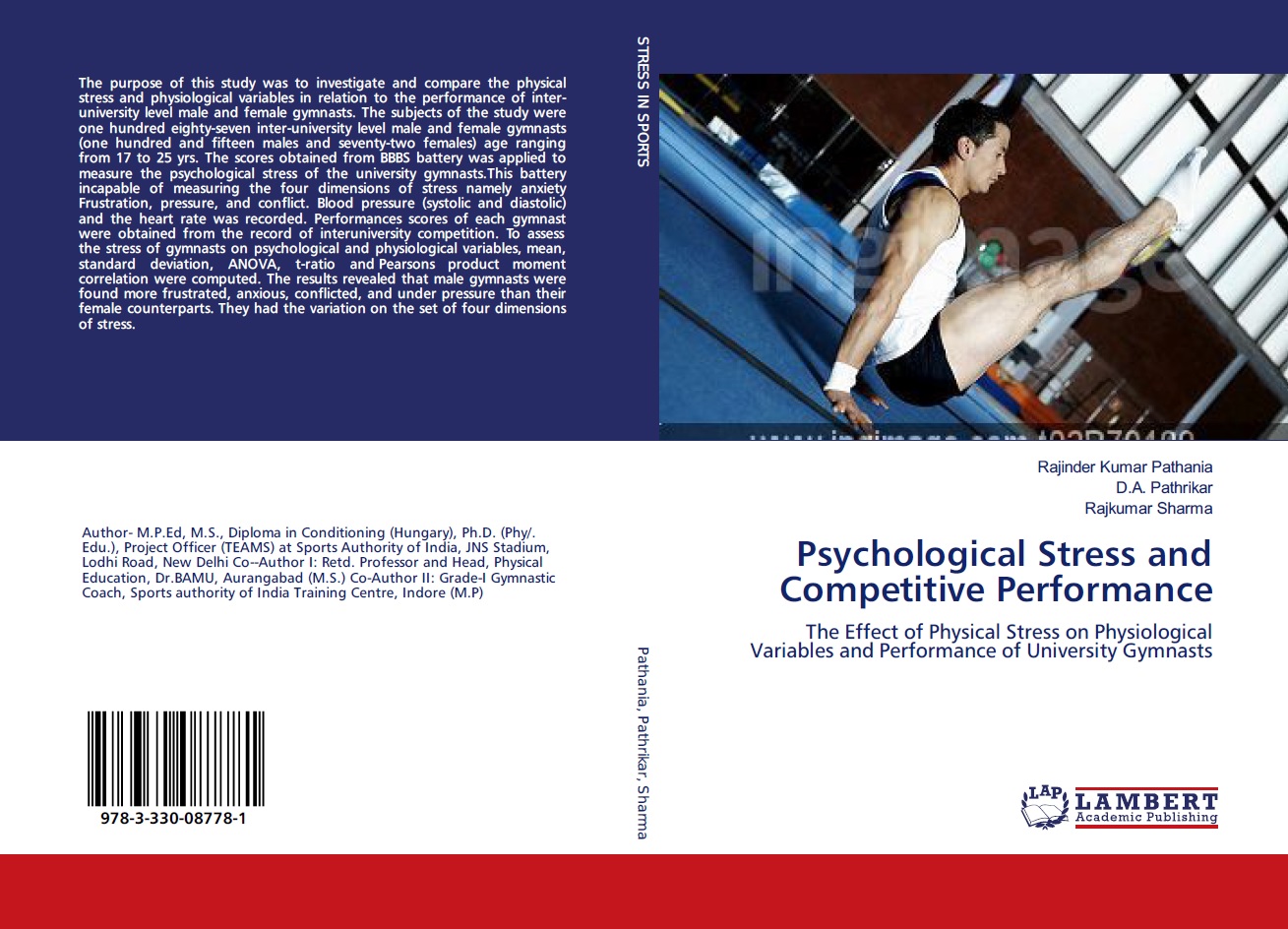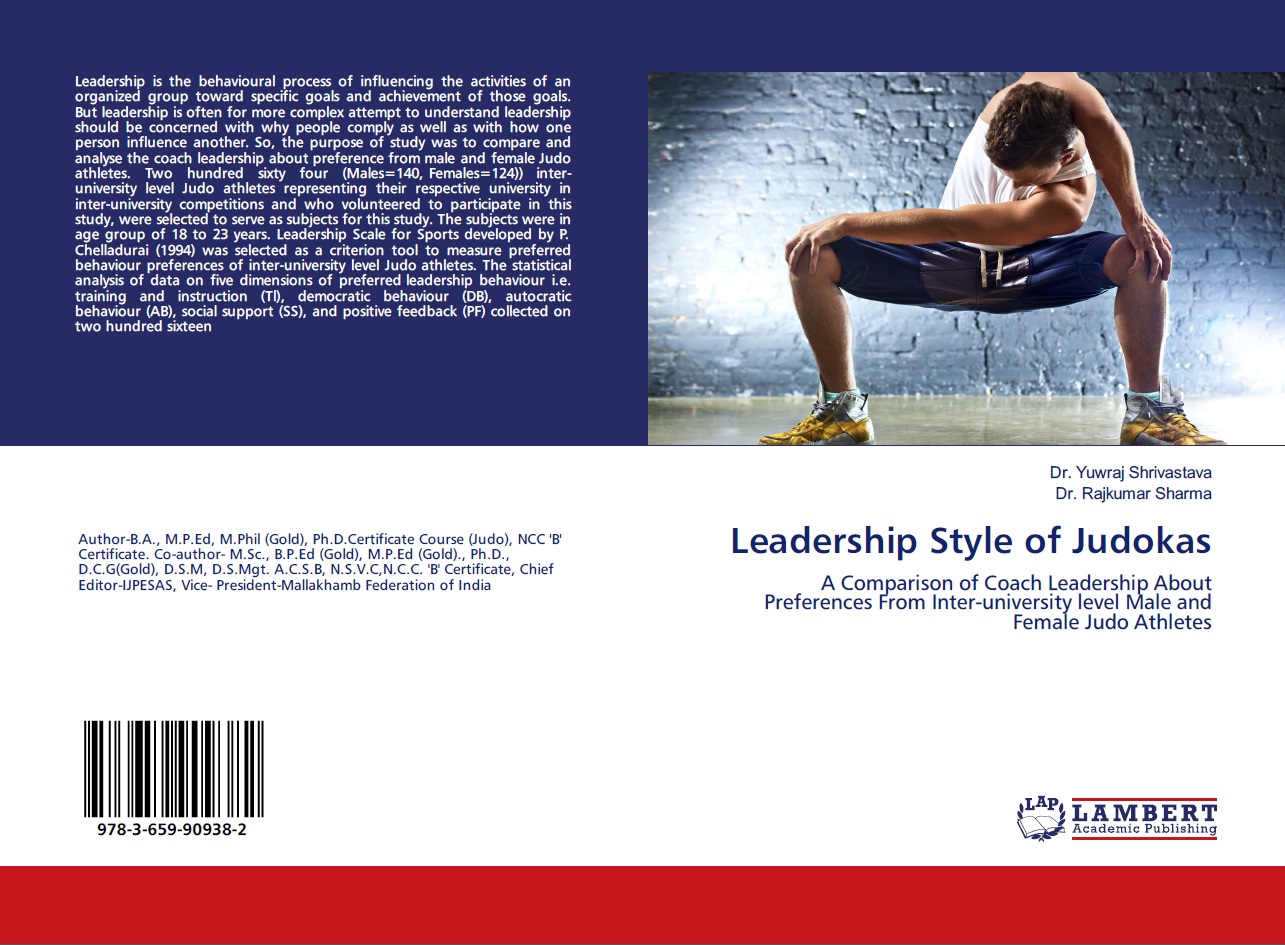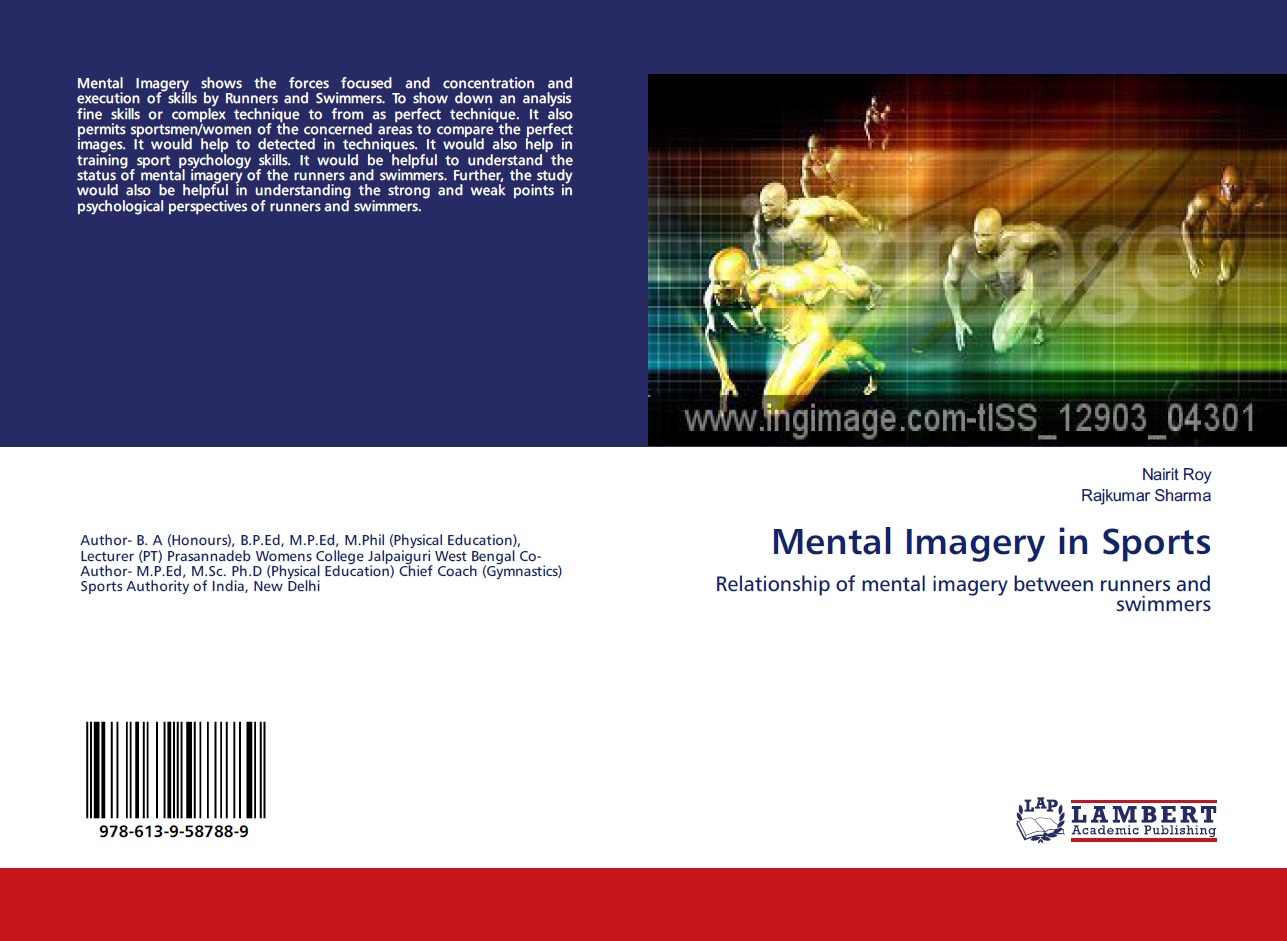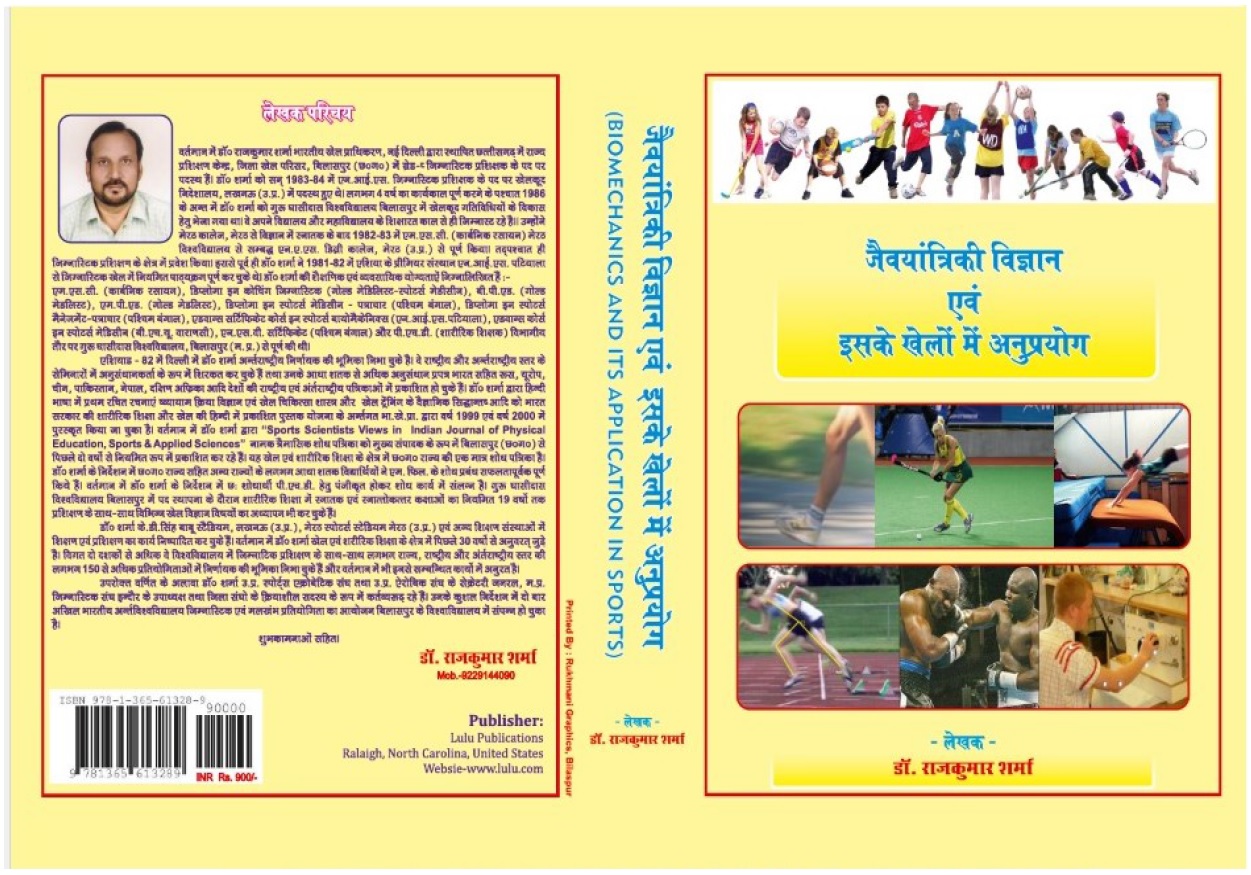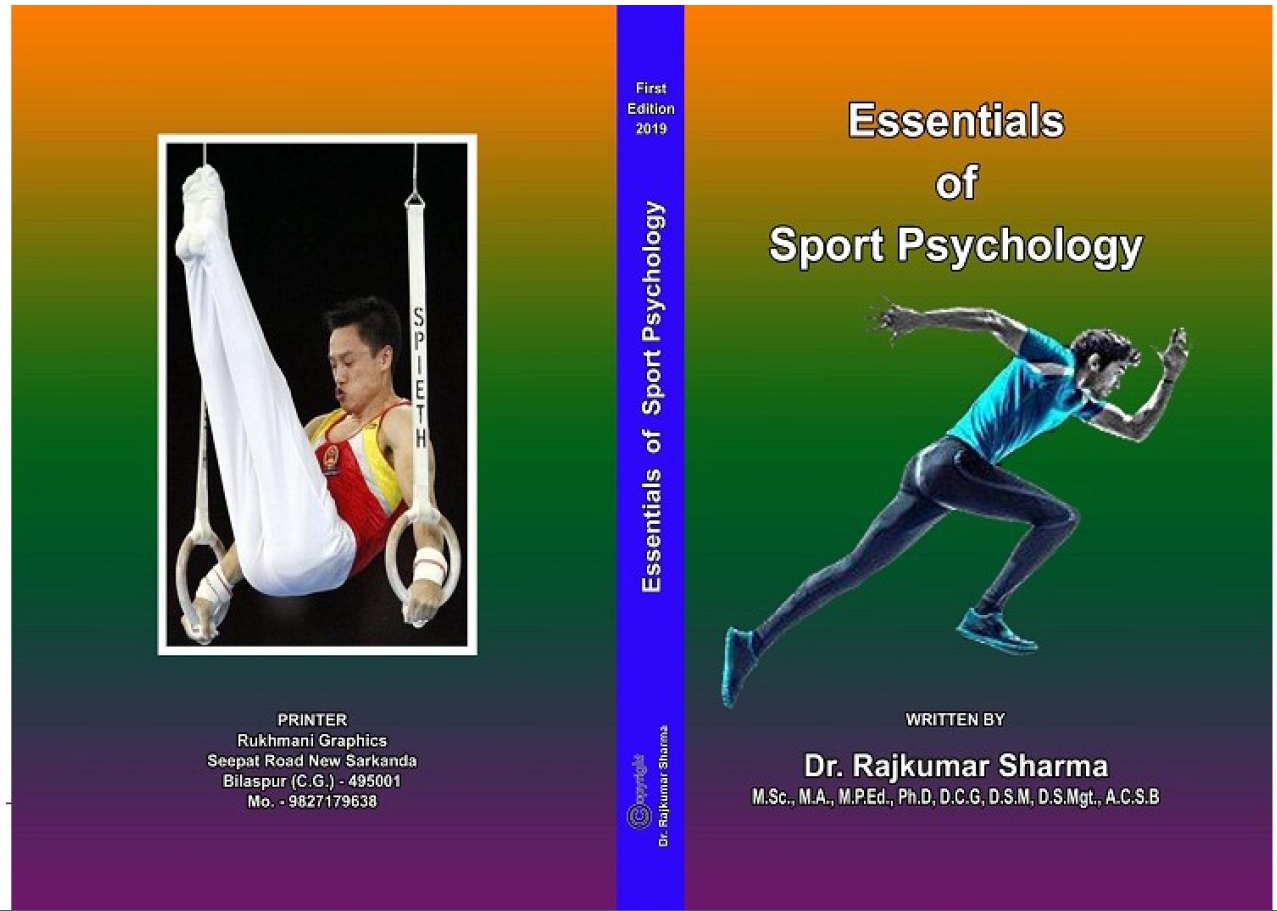| S.No. | Total View Count | Title of Manuscript | Page No | Download/ PDF |
|---|---|---|---|---|
| 1 | EFFECT OF SURYANAMASKAR YOGA NIDRA AND PRANAYAMA ON BODY MASS INDEX AND ANXIETY OF CHILDRENWITH ALEXITHYMIA Author: Suja. S 1 & P. Mahendiran 2 | 18-26 |  16 16 |
Article info
doi no.: 05-2016-44975451,
DOI Link :: https://doi-ds.org/doilink/12.2021-18199215/IJPESAS/05.2016-44975451/V11/I4/A3
AFFILIATIONS:
- Ph.D. Research Scholar,Centre for Yoga Studies, Dept of Physical Education, Annamalai University. Email id: sujasankarans@gmail.co
- Assistant Professor, Dept of Physical Education, Annamalai University. Email id: mahee1981pe54@gmail.com
Pranayama on body mass index and anxiety of children with Alexithymia. Materials and Methods: 42 girl children with alexithymia disorder, aged from 8 to 12 were selected as subjects from the girls’ hostel at Krishna district during the year 2021. The subjects were divided into experimental group and control group, consisting twenty one subjects in each group, namely experimental group and control group. The experimental group underwent Suryanamaskar, Yoga Nidra, and Pranayama practices for 5 days per week for 9 weeks. The control group was not given any training during the study. The selected subjects with alexithymia were analyzed using Children Alexithymia Measuring Scale (CAMS). Before and after the training period, the subjects were tested on body mass index (BMI) and anxiety. BMI was measured by using Karadascan Body Composition Monitor and anxiety was measured by using GAD7 measuring scale. Statistical analysis: Independent sample t-test and Analysis of Covariance (ANCOVA) was used as a statistical tool to examine any improvement after the training period for the experimental group and also to find out any difference between the experimental and control groups.Results: The result of the study shows that there is a decrease found in BMI and anxiety variables of children with alexithymia by practicing Suryanamaskar, Yoga Nidra, and pranayama. Conclusion: The experimental group practice of Suryanamaskar, Yoga Nidra, and pranayama has changed the BMI and anxiety positively after comparing with the control group and the results also indicated that there was a significant difference identified between the experimental group and control group on BMI and anxiety.
Keywords: Suryanamaskar, Yoga, Pranayama, BMI, Anxiety and Alexithymia.
References
Adam M. Bernstein, Judi Bar, Jane Pernotto Ehrman, Mladen Golubic, D and Michael F. Roizen,. (2014). Yoga in the management of overweight and obesity. American Journal of Lifestyle Medicine, 8 (1): 33-41.
Alloy LB, Hamilton JL, Hamlat EJ, Abramson LY.(2016). Pubertal Development, Emotion Regulatory Styles, and the Emergence of Sex Differences in Internalizing Disorders and Symptoms in Adolescence. Clin Psychol Sci., 4(5), 867–81.
Bhardwaj, P. R., and Bhardwaj, A. K. (2015). Therapeutic applications of yoga for weight reduction in obese population: an evidencebased overview. Online Journal of Multidisciplinary Research, 1(1): 1-5.
Bhogal R.S, Gore M.M, and Rajapurkar M V (1993): Effect of Low Pitch Om recitation on psycho-physiological parameters. Yoga Mimamsa, Vol.XXX (3 & 4), p 194-204.
Bhushan, S., & Sinha, P. (2001). Yoganidra and management of anxiety and hostility. Journal of Indian Psychology, 19(1-2), 44-49.
Bagby,1994). "The twenty-item Toronto Alexithymia Scale: I. Item selection and cross-validation of the factor structure". Journal of Psychosomatic Research. 38 (1): 23–32.
Costello EJ, Mustillo S, Erkanli A, Keeler G, Angold A.(2003). Prevalence and development of psychiatric disorders in childhood and adolescence. Arch Gen Psychiatry,. 2003;60:837–844. pmid:12912767
Chinmayananda, S. (1984). Mandukya upanisad. Bombay, India: Sachin Publishers.
Chander Ramesh Sing, Mahender Bala, Raj Kumar, Rakesh, (2011) “Effect of Kapalabhati on Weight loss and Waist Size”,Yoga Mimamsa, Vol.XLII No. 4:248-254.
Dorn LD, Dahl RE, Woodward HR, Biro F. (2017). Defining the Boundaries of Early Adolescence: A User’s Guide to Assessing Pubertal Status and Pubertal Timing in Research With Adolescents. Appl Dev Sci [Internet]. Lawrence Erlbaum Associates, Inc.; 10(1):30–56
FeldmanHall O, Dalgleish T, Mobbs D (2013). "Alexithymia decreases altruism in real social decisions". Cortex. 49 (3): 899–904.
Gharote M L and Ganguly S K (2001). Teaching Methods for Yogic Practices. Lonavala: Kaivalyadhama, pp. 16.
Grant, BF., Hasin, DS., Blanco, C., Stinson, FS., Chou, SP., & Goldstein, RB (2005). The epidemiology of social anxiety disorder in the United States: results from the National Epidemiologic Survey on Alcohol and Related Conditions. J Clin Psychiatry [Internet]. 2005;66(11):1351–61.
Hankin BL, Abramson LY, Moffitt TE, Silva P a, McGee R, Angell KE. (1998). Development of depression from preadolescence to young adulthood: emerging gender differences in a 10-year longitudinal study. J Abnorm Psychol. 107(1):128–40.
Hankin BL.(2009). Development of Sex Differences in Depressive and Co-Occurring Anxious Symptoms During Adolescence: Descriptive Trajectories and Potential Explanations in a Multiwave Prospective Study. J Clin Child Adolesc Psychol., 38(4), 460–72.
Hankin BL, Young JF, Abela JRZ, Smolen A, Jenness JL, Gulley LD, et al.(2015). Depression from childhood into late adolescence: Influence of gender, development, genetic susceptibility, and peer stress. J Abnorm Psychol [Internet]. 73(4):389–400.
Kessler RC, McGonagle KA, Zhao S, Nelson CB, Hughes M, Eshleman S, (1994). Lifetime and 12-Month Prevalence of DSM-III-R Psychiatric Disorders in the United States. Arch Gen Psychiatry, 51(1), 8.
Khasky, A. D., & Smith, J. C. (1999). Stress, relaxation states and creativity. Perceptual and Motor Skills, 8(2), 409-416.
Lewinsohn PM, Rohde P, Seeley JR, Klein DN, Gotlib IH. (2000). Natural course of adolescent major depressive disorder in a community sample: Predictors of recurrence in young adults. Am J Psychiatry. 157(10):1584–91. pmid:11007711
Murugavalavan and Jayanthi. (2019). Effect of suryanamaskar on body mass index, systolic and diastolic blood pressure among obese working women. International Journal of Yogic, Human Movement and Sports Sciences, 4(1): 976-977.
Miller, J. J., Fletcher, K., & Kabat-Zinn, J. (1995) Three-year follow-up and clinical implications of a mindfulness-based stress reduction intervention in the treatment of anxiety disorders. General Hospital Psychiatry, 17, 192–200.
Nagendra, H. R., & Nagarathna, R. (1997). New perspectives in stress management. Bangalore, India: Vivekananda Kendra Prakashan.
Nolen-Hoeksema S, Larson J, Grayson C.(1999). Explaining the gender difference in depressive symptoms. J Pers Soc Psychol., 77(5),1061–72.
Nemiah, J. C., & Sifneos, P. E. (1970). Affects and fantasy in patients with psychosomatic disorders. In O. Hill (Ed.), Modern trends in psychosomatic medicine. London: Butterworths.
Nemiah JC, Freyberger H, Sifneos PE.(1976). Alexithymia: A view of the psychosomatic process. In: Hill OW, editor. Modern trends in psychosomatic research, 3, 430–439.
Nautiyal, Rajni (2016). Effect of surya namaskar on weight loss in obese persons. International Journal of Science and Consciousness, 2(1): 1-5
Preece, D (2017). “Establishing the theoretical components of alexithymia via factor analysis introduction and validation of the attention-appraisal model of alexithymia”, Personality and Individual Differences. 119. 341-352.
Stetter, C. C., & Kupper, L. (2002). Autogenic training: A meta-analysis of clinical outcome studies. Applied Psychophysiolgy and Biofeedback, 10(1), 45-98.
Shenbagavalli, A., & Divya, K. (2010). The effect of specific yogic exercises and combination of specific yogic exercises with autogenic training on selected physiological, psychological and biochemical variables of college men students. Journal of Exercise Science and Physiotherapy, 6(2), 94-101.
Shirley Telles, Vaishali Gaur and Acharya Balkrishna. (2009). Effect of a yoga practice session and a yoga theory session on state anxiety. Perceptual and Motor Skills, 924-930.
Schuch JJJ, Roest AM, Nolen WA, Penninx BWJH, de Jonge P.(2014). Gender differences in major depressive disorder: Results from the Netherlands study of depression and anxiety. J Affect Disord., 156, 156–63.
Satyananda, Saraswati Swami (2003). Asana Pranayama Mudra Bandha. Munger: Yoga Publications Trust, pp. 181.
Satyananda, Saraswati Swami (1984). Yoga nidra. Bihar, India: Yoga Publications Trust.
Sifneos PE (1973). "The prevalence of 'alexithymic' characteristics in psychosomatic patients". Psychotherapy and Psychosomatics. 22 (2): 255–262.
Satyananda, Saraswati Swami (2008). Asana Pranayama Mudra Bandha. Munger: Yoga Publications Trust, pp. 5.
Saxena O P, (2010). Vrihad Prakritik Chikitsa. Mathura : Hindi Seva Sadan, pp. 45.
Sakai, M. (1997). Effort of autogenic training for anxiety disorders: A clinical study in a psychiatric setting. Fukuoka Igaku Zasshi, 88(3), 56-64.
Takeichi, M., & Sato, T. (2000). Studies on the psychosomatic functioning on fill-health according to Eastern and Western medicine. The American Journal of Chinese Medicine, 28(1), 9-24.
Tondo L, Pinna M, Serra G, De Chiara L, Baldessarini RJ.(2017). Age at menarche predicts age at onset of major affective and anxiety disorders. Eur Psychiatry, (39), 80–85
Taylor GJ, Bagby, M.R., Parker, J.D.A.(1999). Disorders of Affect Regulation: Alexithymia in Medical and Psychiatric Illness. Cambridge: Cambridge University Press
Vivekananda, R. (2005). Practical Yoga Psychology. Munger: Yoga Publications Trust, pp. 228.
Van Oort FVA, Greaves-Lord K, Verhulst FC, Ormel J, Huizink AC.(2009). The developmental course of anxiety symptoms during adolescence: The TRAILS study. J Child Psychol Psychiatry Allied Discip. 50(10):1209–17.
YogaMag, Brain: The Controller, (1991). Retreived on 2 nd February, 2011 from http://www.yogamag.net/archives/1991/esep91/brain.shtml
 admin@sportscientistsviews.com
admin@sportscientistsviews.com

